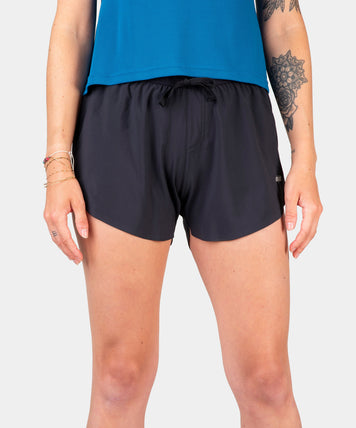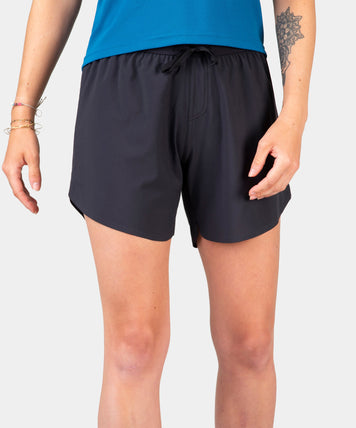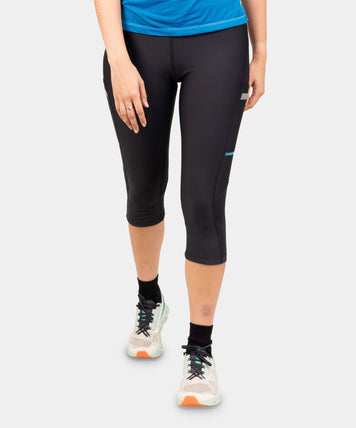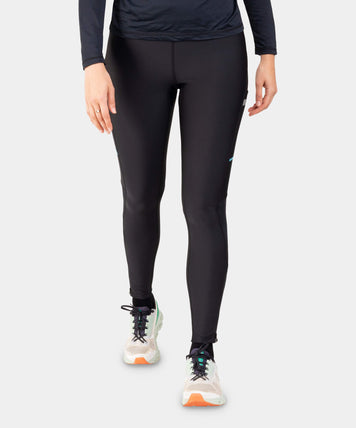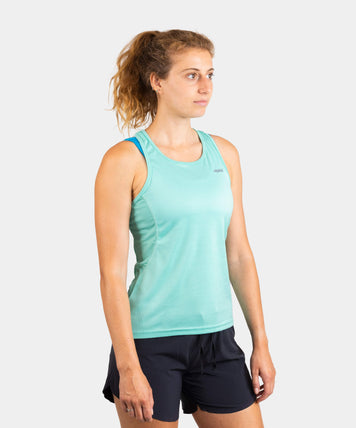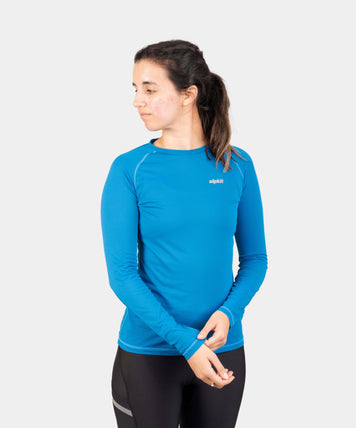
Welcome to our spring trail running clothing guide, designed to reinvigorate your passion for hitting the trails as the days grow longer and nature awakens. Spring invites us to layer for movement by shedding winter’s heavy, insulated layers and embrace lightweight, breathable gear.
Throughout the winter, you’ve braved the elements, pushing through the darkness, moisture, and chill that test even the most dedicated runners. The arrival of spring marks a well-deserved transition, offering a lighter, brighter approach to your trail runs.
As you rotate your running wardrobe, prioritise materials that wick moisture, breathe easily, and dry quickly. Yes, this includes everything you wear, right down to your underwear. These fabrics are essential for maintaining a comfortable body temperature and managing perspiration effectively.
Choosing what to wear can often feel like a gamble against the weather’s whims. This is why opting for several thin layers is wise, allowing you to seamlessly adjust to the day’s unpredictable conditions and varied terrain.
For those venturing into remote or alpine terrain for extended periods, erring on caution with an extra layer is prudent. While the comprehensive gear list recommended by the Fell Running Association—including a waterproof full-body cover, a hood, taped seams, a hat, and gloves—may seem overkill for a casual jaunt in your local woodlands, such precautions become indispensable in mountainous or exposed areas, where weather conditions can shift dramatically.

Enhanced moisture management for trail running
For trail running, selecting the right base layers is crucial for optimal comfort and performance. This includes tops, shorts, tights, and underwear; garments designed to wick moisture away from the skin and facilitate rapid evaporation. This process not only helps cool you down during intense runs but also prevents the discomfort of clamminess and the chill that can set in from retained moisture.
The choice of material plays a pivotal role here: synthetic fibres, such as polyester, excel in wicking moisture and quick drying, making them ideal for the warmer months. On the other hand, merino wool stands out for its natural breathability and ability to retain warmth even when wet, making it a preferred option for cooler weather. Both materials are versatile for year-round use, with a slight preference for synthetics in the summer and merino wool in the winter, depending on your specific needs and the climate you’re running in.
Wind protection strategies
When facing the unpredictability of spring weather, don’t underestimate the importaance of a good windproof jacket or gilet. These lightweight, highly packable layers are your first line of defence against wind chill, capable of significantly reducing its impact. Moreover, accessorising with a thin hat, [neck warmer(/products/draught-excluder), and gloves can be a game-changer. These seemingly small additions are incredibly effective at retaining body heat and can be easily carried, ready to be deployed when the mercury dips unexpectedly.
Insulation without overheating
For those chillier spring days, consider beefing up your base layer or incorporating a lightweight fleece jacket or gilet into your outfit. These options are designed to offer an additional layer of insulation without compromising on breathability. They allow sweat and excess heat to escape, ensuring that you stay warm without overheating.
Choosing the right trail running legwear
As spring arrives, it’s time to transition from the heavier gear of winter. While you may have persevered with running shorts throughout the colder months, the rest of us eagerly anticipate the opportunity to bring our legs out of hibernation. Running shorts are optimal for fast-paced activity in hilly terrains, providing unmatched comfort and mobility. For those who prefer a middle ground, 3/4 length running tights offer a versatile solution. They provide additional coverage while still allowing for excellent mobility and comfort, making them an excellent choice for variable spring weather.
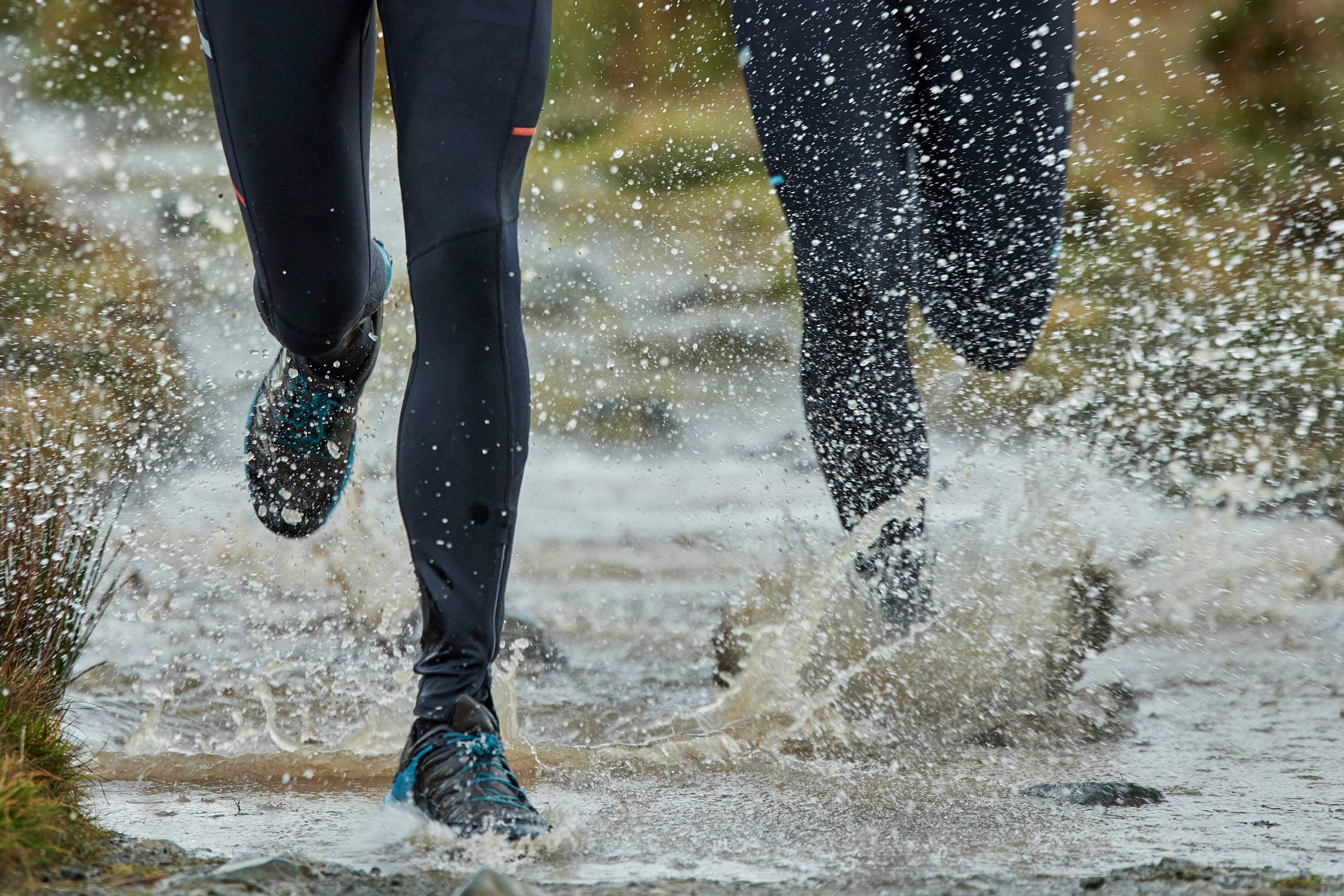
Running footwear and socks
Choosing the right socks and footwear for springtime trail running involves several key considerations to ensure comfort, protection, and performance whatever the terrain and weather conditions typical of the season.
When choosing trail running shoes, focus on versatility; durable traction for mixed terrain, and materials that balance waterproofing with breathability. Prioritise shoes with deep lugs for grip on muddy or loose trails, reinforced areas for durability, and a design that offers protection and quick drying capabilities. A comfortable fit is essential, allowing your foot to swell naturally without compromising stability. Additionally, ensure the interface between your shoes and socks is compatible, with no abrasion points and optimising moisture management and reducing the risk of blisters. Here are some essential factors to keep in mind:
-
Material: Look for socks made from moisture-wicking and quick-drying materials to help manage sweat and prevent blisters. Synthetic blends (like polyester, nylon, and spandex) or natural fibres with excellent moisture management (such as merino wool) are ideal. These materials can help keep your feet dry and comfortable, reducing the risk of blisters and hot spots.
-
Breathability: Spring weather can range from cool to warm, so choosing socks with good breathability is crucial. Look for socks with mesh ventilation zones or those made from breathable fabrics that allow air to circulate, helping to regulate temperature and keep feet cool as runs get warmer.
-
Cushioning: Depending on how bumpy your trail is, you may want socks with a high degree of cushioning. Light to moderate cushioning can provide comfort and protection against impact without significantly affecting the fit of your running shoes. Consider thicker cushioning for longer runs or trails with sharp rocks and roots and thinner cushioning for shorter runs or softer trails.
-
Fit: A well-fitting sock is essential to avoid slipping and bunching, leading to blisters. Look for socks that hug your feet snugly but comfortably, with no excess material. Features like elastic arch bands and snug-fitting cuffs can help keep your socks in place during your runs.
-
Length: The right sock length is partly a matter of personal preference and partly practical. Crew-length socks can offer additional protection against brush and debris common on spring trails. At the same time, shorter lengths may be more comfortable in warmer conditions and provide sufficient protection on well-maintained trails.
-
Water Resistance: Early spring trails can be wet from melting snow or spring rains. While fully waterproof socks might be overkill and reduce breathability, look for socks with water-resistant properties or quick-drying capabilities to help keep your feet dry in damp conditions.
-
Durability: Trail running can be tough on socks, especially in the spring when trails may be more rugged or muddy. Choose socks designed for durability, with reinforced heels and toes to withstand the demands of trail running and extend the life of your socks.
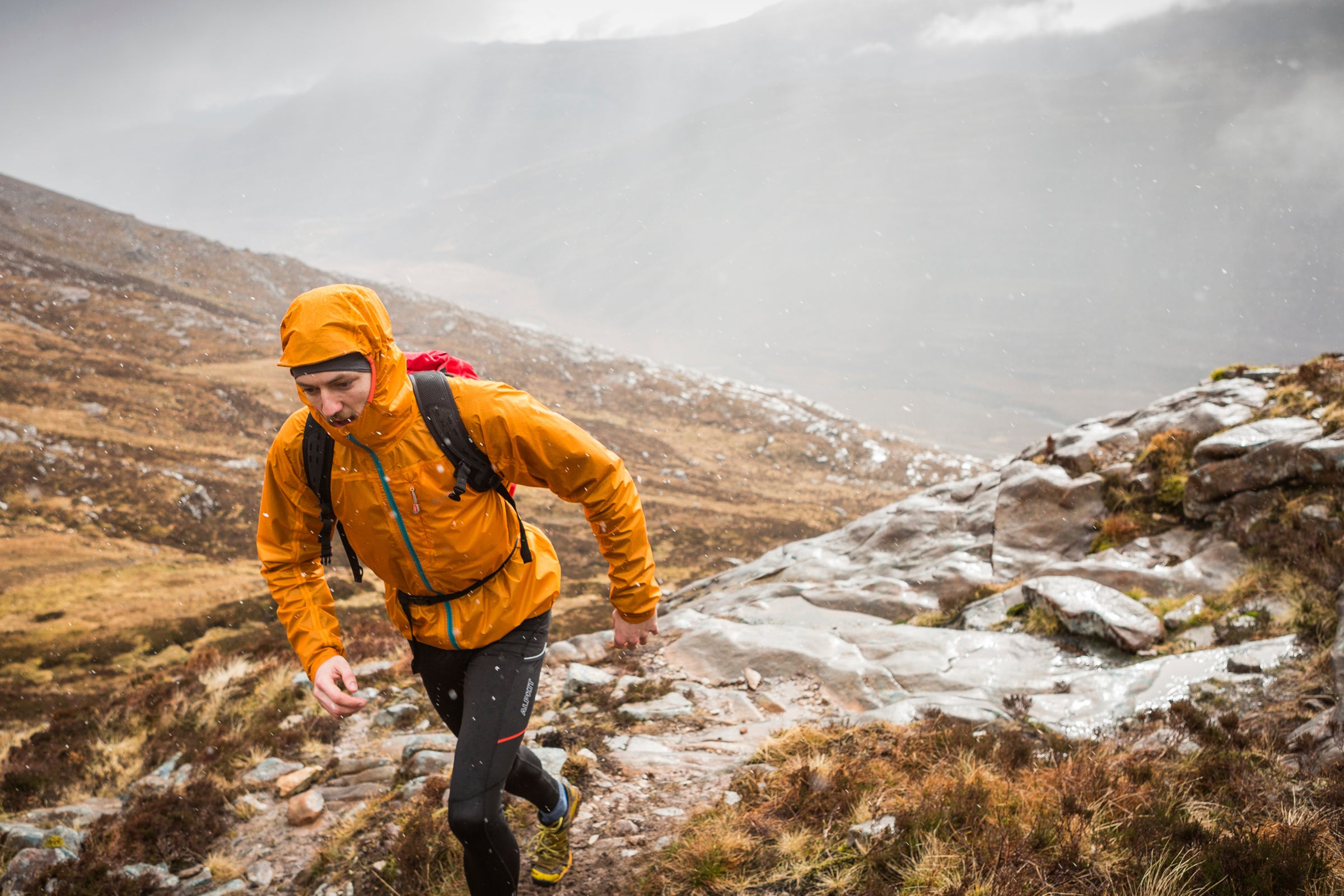
Essential considerations for spring waterproofs
During a run your body generates heat that leads to sweat. It’s common for many runners to skip wearing a waterproof layer, opting instead to embrace the dampness. They rely on their body heat to counter the coolness of being wet, especially during the warmer spring months. However, this approach can be risky, particularly when traversing remote trails where sudden weather changes can pose a challenge.
A good running waterproof is a non-negotiable for those unpredictable spring showers. It should boast exceptional breathability to prevent moisture build-up from inside, lightweight construction for unrestricted movenent, and compressibility for easy storage in your running pack. Spring’s milder temperatures allow for the use of lighter and more pliable fabrics, enhancing your range of motion and making the jacket less cumbersome to pack away. These characteristics ensure that your waterproof layer supports your run rather than hinders it, providing protection when you need it while remaining unobtrusive when you don’t.
Catch nature off guard
As you embark on this season’s trail running adventures, let this guide inspire your clothing choices, ensuring safety, comfort, and the sheer joy of spring running. Run wild, run free, and let the trails lead you to catch nature off guard.
Women's Trail Run Clothing









